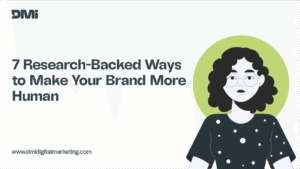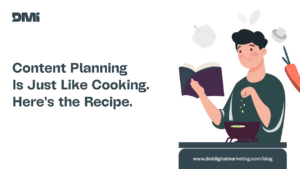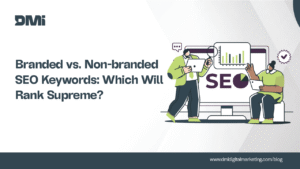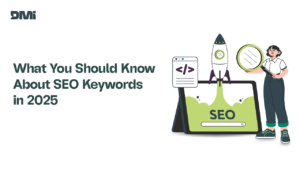Jump to Section
TogglePartnerships between online creators and brands (i.e. Influencer Marketing ) to reach, engage, and convert consumers are supplementing traditional advertising methods in many sectors.
From fashion and beauty to gaming and finance, influence marketing has proven its versatility across industries, business types (B2B and B2C), and social platforms.
In this article, we present a refresher on the benefits, risks, and best practices of this rapidly evolving form of marketing.
What is influencer marketing?
Influencer marketing is a means of promoting and selling products, services, or even brands through social media content creators.
A core unique selling point is that these content creators have a sizable audience and credibility that could readily shape the perception and behavior of an online audience.
And to put a quick disclaimer, it’s not just a celebrity or public figure that fits influencer marketing; it could be a food blogger or even your employee who has built a following online.
This explains why influencers are commonly categorized into four levels—nano, micro, macro, and mega—to reflect their reach and potential impact.
However, the influencer marketing strategy’s overarching intent is to leverage a content creator’s reputation and relationship with their audience to create (authentic-seeming) recommendations that can drive awareness, engagement, and sales.
How big and thriving is the industry?
Why brands are drawn to influencer marketing is easy to understand when we consider its current size, projected growth, and– at the heart of it–the positive impact on consumer behavior or purchasing decisions.
This industry has rapidly evolved from a niche strategy to a multi-billion dollar global industry. As of 2024, the market size was estimated at around $24 billion, with projected steady growth year over year.
According to a study, influencer marketing has the most notable impact on customers about to purchase. This inevitable micro-moment presents a unique opportunity for brands to leverage influencer marketing. That could mean earning $5-$18 for each dollar spent on influencers. And the positive trends go on and on.
The Four Levels of Influencers
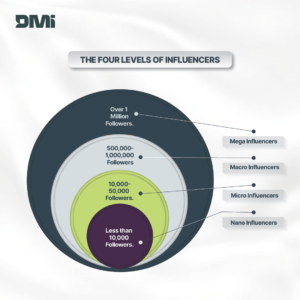
1. Nano influencers
These are a set of influencers with less than 10,000 followers on social media. They are primarily regular people with solid connections and a highly engaged niche.
Pros:
- Numerous studies, like this one, show that nano influencers could even have a higher engagement rate than other types of influencers.
- Good for businesses targeting specific niches and demographics.
- Working with nano influencers costs less than working with mega and macro influencers.
Cons:
- Limited reach
- There is the problem of scalability for more extensive campaigns.
2. Micro influencers
These are influencers with social media followers ranging from 10,000 to 50,000. They are usually experts in a particular topic or leaders in a niche. They are known for their authenticity and relatability.
Pros:
- Essential for brands wanting to build followers and attract niche audiences.
- More affordable to work with than prominent influencers.
Cons:
- Micro-influencers (the suitable ones) are quite difficult to find compared to mega influencers
- They need extra effort to ensure brand alignment due to varying levels of professionalism.
3. Macro influencers
Macro influencers’ audience figures range from 100,000 to 500,000 followers.
They are primarily famous social media personalities and industry experts who have built their reputations through consistent posting and engagement.
Pros: They can help brands reach a wider audience and increase brand awareness QUICKLY.
Cons: Due to their large followings, their content might be believed to be less genuine and lack authenticity, which reduces their effectiveness.
4. Mega influencers
These influencers have large followings of over 1 million on their platforms.
They usually include celebrities like famous actors, musicians, and athletes. Their status makes them ideal for large-scale campaigns.
Pros: The ability to generate buzz around a product/brand
Cons: They are selective in choosing the brand to work with, so partnering with them can be incredibly expensive.
Some Key Risks In Influencer Marketing
Uncertainty and risk are part of influencer marketing, and it’s not just about the brand.
All parties, including consumers and influencers, could face potential challenges that can impact the effectiveness and trustworthiness of this marketing effort. Here are some you should keep in mind:
-
Fake followers, likes and comments
A global analysis by Modash, an influencer marketing platform, found millions of fake followers on Instagram accounts.
It may not even take this data to understand the prevalence of this and its risks for your influencer marketing campaign.
A simple Google search for “fake followers” will bring numerous websites offering followers, likes, and comments for sale. As a Forbes contributor aptly described it, this practice has become “formalized.” You’ll need to employ influencer marketing tools to verify followers, likes, and comments before establishing relationships.
-
Brand reputation vulnerability
Consumers hold brands accountable for influencer behavior. The contracted influencer could–either during or after the partnership– inadvertently say and do things that undermine the brand they represented.
For instance, if an influencer makes a controversial remark or is involved in a scandal, it can lead to public outrage or even calls for boycotts against the brand.
To protect against these possibilities, you should include expected behavour in your contract, create a response strategy for potential controversies, and avoid reliance on a single influencer.
-
Misrepresentation
Misrepresentation here is the omission of facts (not necessarily falsehood) which could expose consumers to unfair advantage or harm.
The audience may assume that an influencer’s endorsement comes from personal experience, which it does not in most cases.
Even if an influencer doesn’t explicitly claim to have used a product or service, there’s still a risk for consumers if they endorse it without having genuinely used it.
The best practice is to ensure clear and prominent disclosure of sponsored content. That could mean using standardised hashtags or the ‘Sponsored post’ features on your preferred socials.
- Content erosion
As influencers take on more paid partnerships, their feeds become dominated by sponsored posts.
This can lead followers to feel that the influencer’s content is no longer genuine or personal but primarily commercial.
For example, a fashion influencer who used to share personal style tips now posts almost exclusively about sponsored clothing brands, which could make followers question their sincerity.
There should be a balance between time for sponsored content and time for authentic, non-sponsored posts.
How to Identify and Partner with Influencers Who Align with Your Brand Values and Money Goals
-
Identify Influencer Archetypes
During your selection process, you could categorize influencers based on their impact (mega, macro, micro, nano) or content style (lifestyle, expert, aspirational). This categorization is what we refer to as ‘influencer archetypes ‘. Looking at it from this lens would help you define your campaign objectives.
For example, if you’re launching a niche tech product, partnering with micro-influencers who are tech experts might be more effective than working with a mega-influencer with a broader audience but less tech credibility.
Identifying influencer archetypes can help you determine whether you need to work with multiple influencers to achieve your business goals.
-
Set KPIs
Influencer marketing should be data-driven from the onset. Siim Säinas, an influencer marketing specialist and current Google’s Social Measurement & Insights Manager in APAC, once identified eight key metrics to assess an influencer’s fit for a business. These metrics include audience match, entertainment value, content quality, and engagement rate.
-
Leverage Influencer Marketing Tools
There are numerous tools designed to filter your influencer search, verify their followers, likes, and comments, and make the best out of the relationship. Here are a few of them:
Tools to Find Relevant Influencers: CreatorIQ, Heepsy, Ninjaoutreach, Pitchbox, Uplfluence and HypeAuditor
Tools for Managing Influencers: Influencity, Modash, Collabstr, Trend.io, Tagger, Upfluence and Grin
-
Partner with an Influencer Marketing Agency
If you can’t work the path alone, speak with a marketing agency that could help you find, vet, and manage an influencer for your campaigns.
Bottom Line
Audiences crave authenticity in marketing. They prefer content that feels genuine and spontaneous.
Influencers excel at delivering all of this through their consistent posts, which are full of conversational style and relatable storytelling.
Their messaging sometimes resonates more deeply than the copywriter’s carefully crafted claims or the spokesman’s rehearsed voice-over in a commercial.
That is why brands are increasingly turning to this marketing strategy to connect with audiences in an authentic and engaging way. However, caution should be taken to ensure your influencer strategy doesn’t become a house of cards.
Frequently Asked Questions (FAQs)
Q: How is influencer marketing related to digital marketing?
A: Influencer marketing is a form of social media/digital marketing because it involves content creation, performance measurement, and strategic audience targeting through digital platforms. For example, a digital marketing expert can help you track how influencer posts drive engagement or lead to sales.
Q: Is influencer marketing the same as affiliate marketing?
A: No, influencer marketing and affiliate marketing are not the same. Influencer marketing focuses on leveraging a content creator’s audience and reputation to promote a brand, while affiliate marketing is a performance-based model where the person earns commissions for driving specific actions, typically sales, through unique tracking links.
Q: What is the difference between B2C and B2B influencer marketing?
A: The notable differences are in the content and platform. For content, B2C often focuses on lifestyle, personal experiences, and product reviews, while B2B may choose to showcase industry insights, professional expertise, and thought leadership. As for platforms, B2C tends to use Instagram, TikTok, YouTube, and a personal blog, while B2B often relies on LinkedIn, industry-specific platforms, and professional webinars.
Q: How does the influencer marketing process work?
A: Drawing from best practices, the influencer marketing journey involves planning, data-driven influencer selection, coordination, collaborative content creation, delivery, and evaluation. None of this should be missing in the process.

